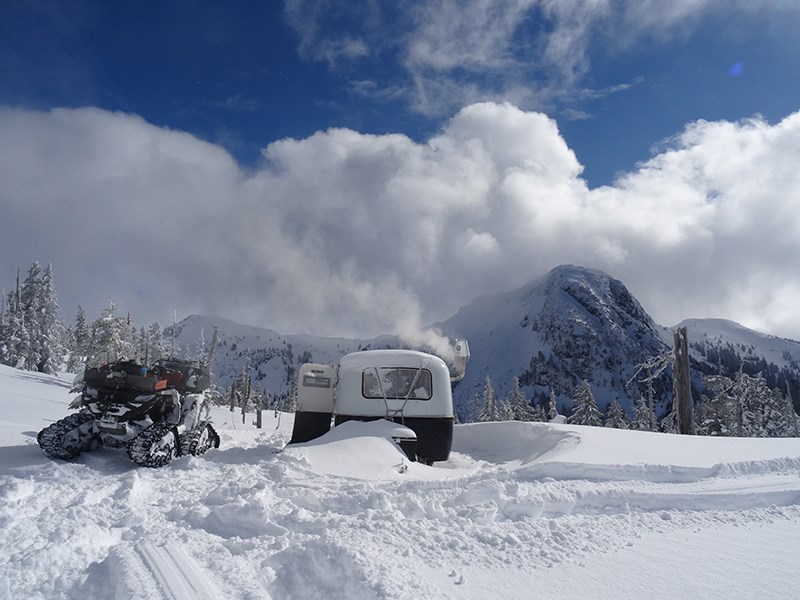An increasingly popular area of Powell River’s backcountry is becoming easier to access due to roadwork done by Knuckleheads Winter Recreation Association and other wilderness community volunteers. As a result, more backcountry enthusiasts have the opportunity to discover the emerging winter playground.
For locals who live for playing in the cold, the Knuckleheads is a unique area, according to association board director John Rapp.
“The majority of our ski terrain is between 4,000 and 5,000 feet and there's a really nice variety at the Knuckleheads because there’s every aspect and every slope angle you could ever want, including open terrain and tree terrain,” said Rapp.
Work being done off of E Branch, a main logging road south of Powell River, has been essential for creating easier access to the area.
“You have good accessibility now with the road we've been working on,” said Rapp. “It's going to be improving more and it's close to town; it's only an hour drive.”
Last winter, a Boler trailer was airlifted to a ridge right beside the Knuckleheads.
“The trailer is a temporary facility while we work on getting the permanent cabin built, funded by Powell River Community Forest, which is now scheduled for construction summer of 2018,” said former Knuckleheads association board director Wayne Brewer, who is also a member of Powell River Regional District Parks and Greenspace Implementation Advisory Committee.
With the most recent roadwork completed, association volunteer Allen Parsons and his crew have reduced the remaining distance to the trailer to within a few kilometres.
Opening up the area for recreation falls under the strategy outlined in the regional district’s 2016 Regional Trails Plan.
In identifying the potential for the Knuckleheads as a winter recreation destination, the report made several recommendations, including improvements to signage for heavy winter use, backcountry travel and avalanche risk. Creating better parking and pullouts with enough space to load and unload motorized vehicles such as ATVs was also called for in the report.
“As for parking, I've cleared out areas where you can park and get off the road and we'll be doing that again very shortly,” said Parsons.
The most contentious recommendation, similar to anywhere in Powell River’s backcountry, is how to gain greater access. The trails report calls for restoring deactivated roads to usable condition, which often means cooperation with the logging industry.
Logging roads are built for cut blocks, but more and more outdoor enthusiasts see the tradeoff as necessary between industry and backcountry tourism.
“It's a little shortsighted to be deactivating roads that give us such good accessibility,” said Rapp.
Brewer recognizes that some people do not want to see logging expanded to higher elevations.
“Without these logging roads, access would be far more difficult,” said Brewer. “The new road being built up the north slope of Freda Mountain is an example. It will make Freda accessible for far more people, and even though the road is still under construction, more people have begun using it to explore.”
Work is being done on another road, E 100, that connects to the Sentinel, a high elevation plateau where small groups of volunteers have been working to reopen an old, deactivated logging road.



